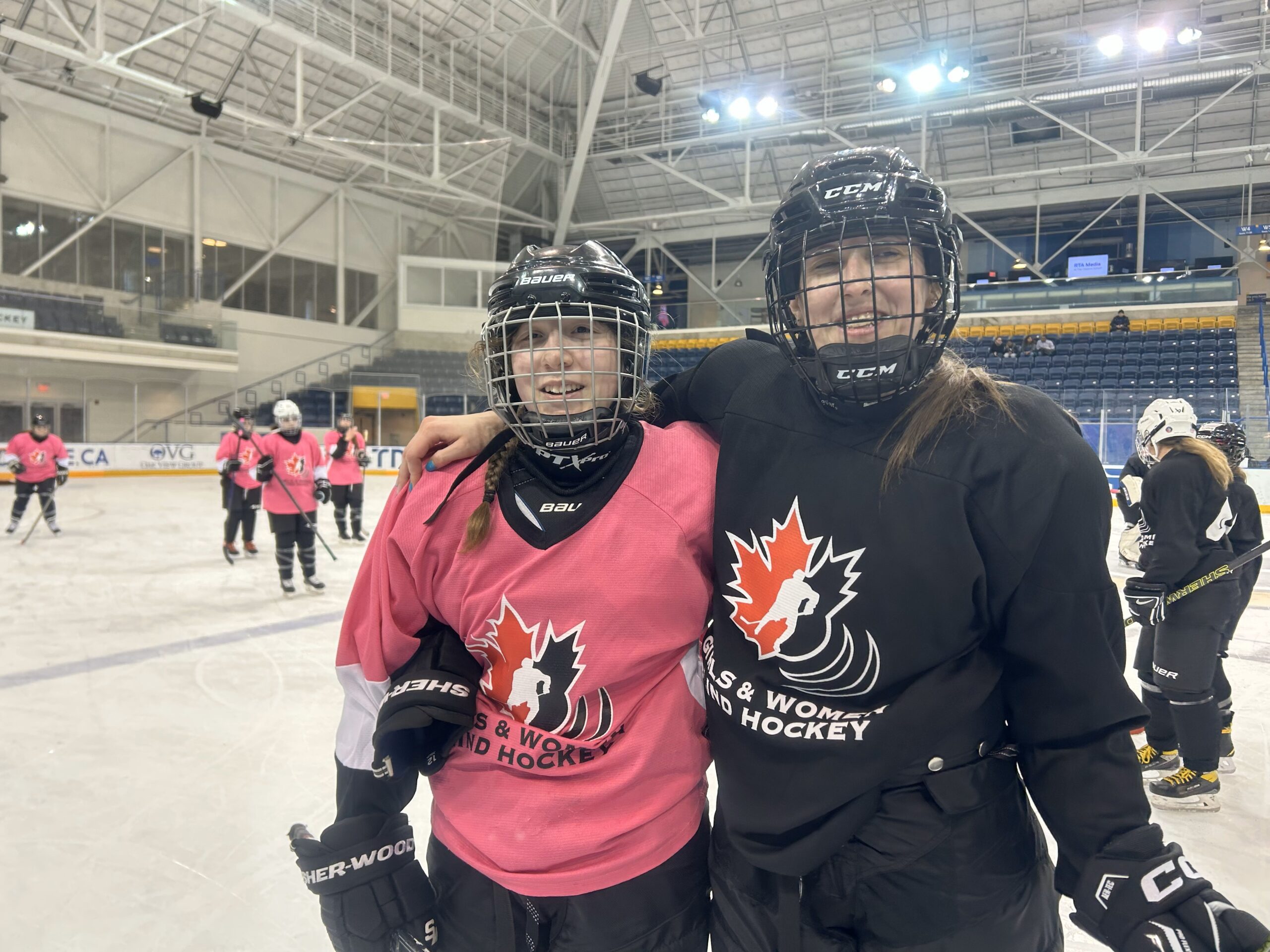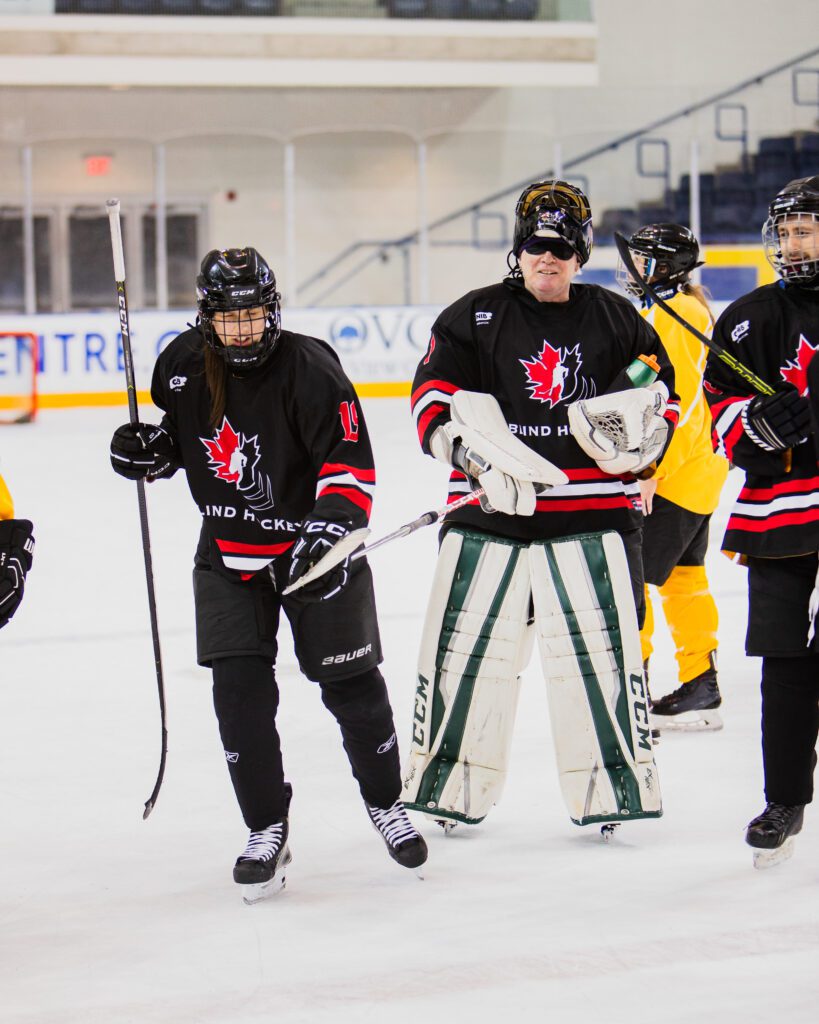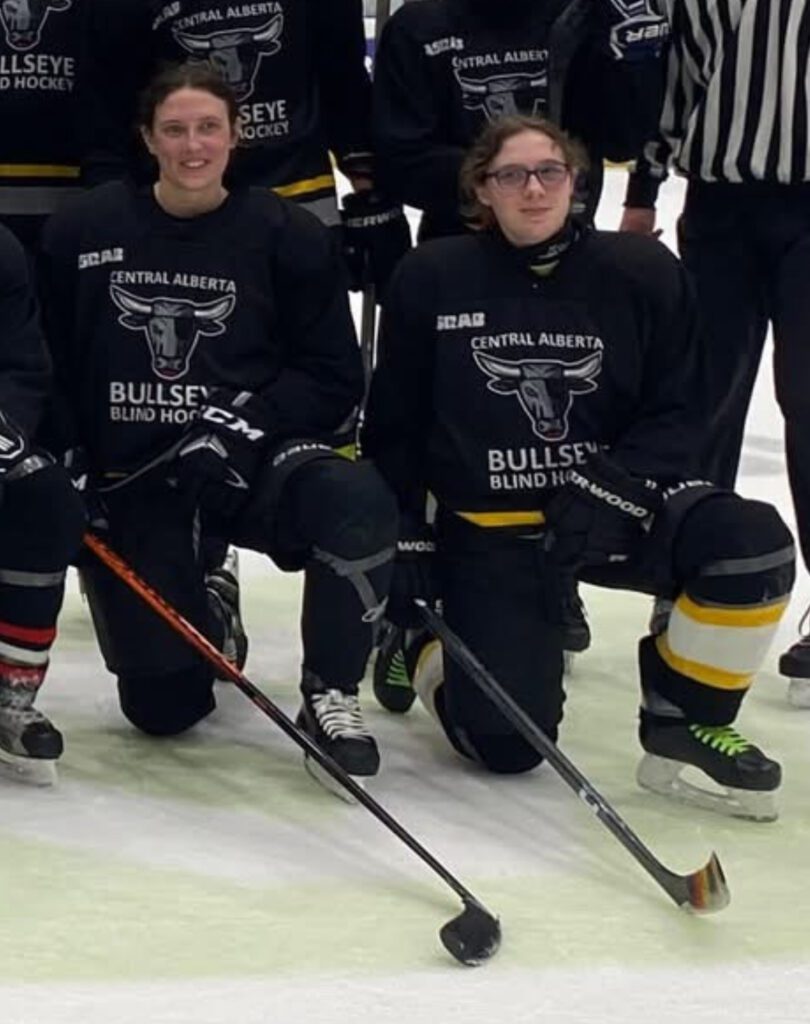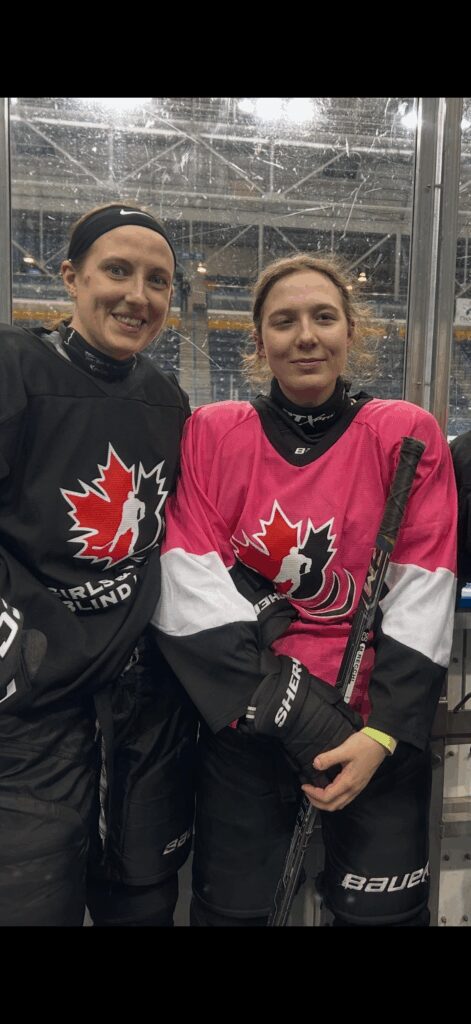
In partnership with Canadian Blind Hockey
June is National Indigenous History Month, a time to reflect on the strength, resilience, and contributions of First Nations, Inuit, and Métis peoples. It’s also a time to acknowledge the gaps that still exist, particularly in areas like sport, where Indigenous youth, especially those with disabilities, continue to face systemic barriers. Yet amid those challenges, powerful stories are emerging. Stories like those of Meghan Mahon and Cassandra Ruttle, 2 Indigenous athletes who are using their experiences to inspire other Indigenous youth, who are blind or partially sighted to try blind hockey and see themselves in the sport.
From Northern Ontario to national teams
Mahon, a proud Métis athlete from northern Ontario, is a force on Canada’s Women’s Goalball Team and a veteran of the blind hockey scene. Her love of sport was sparked early, though her connection to her Métis identity grew more recently, particularly through her work mentoring younger athletes like Ruttle.
“Growing up, I wasn’t as openly connected to my Métis culture. We knew that we were Métis, but also living in northern Ontario, we just kind of embraced a lot of Indigenous ways of living naturally, like living on and with the land,” Mahon shares. “As I moved out west, I grew more curious about my own culture, and I was growing connections with other women and youth in sport. As my mentor relationship grew with Cassandra across goalball and blind hockey, when we discovered she is also Indigenous, it was one of those realizations where we realized this is even more powerful than any of us expected.”
This shared heritage, and the mentor/mentee bond between the 2 athletes, has become a powerful source of strength.
“We have this age gap, and we have this great mentee/mentor relationship, we take part in the same sports and now there’s this cultural piece,” Mahon explains. “It’s so much more than being in sport, it’s a powerful representation that no matter how many barriers or stereotypes are put on a person, you’re able to carry it and let it empower you! It’s pretty cool to look at each other and have that understanding that we’re doing it for our own generations.”
Ruttle’s story: Finding identity through sport
At just 17, Ruttle is already showing signs of becoming a future star in blind hockey and goalball. A member of the Calgary Seeing Ice Dogs, Ruttle’s drive is matched only by her humility.
“My dad is a Sixties Scoop survivor,” she explains, a quiet, weighted truth that echoes through generations. The Sixties Scoop refers to the mass removal of Indigenous children from their families and communities between the 1950s and 1980s, placing them into non-Indigenous homes, often without consent. It was a continuation of assimilationist policies that began with residential schools, these policies are now recognized as deeply harmful and culturally destructive.⁽¹⁾
Because of this legacy and her father not really learning his First Nations culture, Ruttle didn’t either. “So over the past, like, 2 or 3 years, we’ve kind of been getting more into learning about the Indigenous culture and everything else around it. Indigenous events, Pow Wows, smudging ceremonies.”
Through sport, Ruttle is reclaiming more than just a jersey, she’s reclaiming identity. She wants other Indigenous youth with disabilities to know that blind hockey is an option for them too. But Ruttle knows there are barriers. “Organizations need to recognize what it means for people are who are living at the intersection of Indigenous culture who are blind or partially sighted,” she says. “The occurrences of sight loss in Indigenous culture are higher due to health, barriers or access to healthcare so there’s an entire population who’s not getting to enjoy the game that we all enjoy. So how can we bring this sport into people’s communities and break down that barrier of access to having to travel to a major city to take part, and how can we integrate it into programs that already exist?”
Ruttle proudly sees herself as an advocate, both on and off the ice. She’s been part of Canadian Blind Hockey since its early days, attending the very first Summer Development Camp a decade ago. “I was hooked right away,” she says, recalling her transition from years of playing in the sighted hockey world to finding a true sense of belonging in the blind hockey community.
Sport as a vehicle for reconnection and reconciliation
Sport has long been a double-edged sword in Indigenous communities. Sports and games have always been part of Indigenous communities as a source of community building and as a way to reaffirm their ties to land. Sport also has a dark history in Canada, being used as a tool for assimilation. For example, residential schools encouraged Indigenous students to participate in mainstream activities, such as hockey (TMU reference below). Colonizing structures and processes have also normalized disability a deficit or a problem to be fixed. These definitions of disability have been imposed on Indigenous people and communities and has marginalized Indigenous perspectives (Ineese-Nash, 2015).
Today, many Indigenous youth, especially those living with disabilities, face barriers related to cost, transportation, and systemic bias.⁽²⁾

According to Mahon, real reconciliation in sport requires more than land acknowledgments and symbolic gestures.
There are 2 key things, she says. First, internal learning. Sport organizations need to understand how to create culturally safe spaces. And second, geographical depth. Mahone says don’t bring a one-size-fits-all model. Instead, work with communities, ask what’s already there. Be a support, not a saviour.
Her words echo the Truth and Reconciliation Commission of Canada’s Calls to Action, which include ensuring that Indigenous youth have equitable access to sport and recreation.⁽³⁾
A future of representation and reach
Mahon still remembers the first time she attended Canadian Blind hockey’s Summer Development Camp, an experience that changed everything. Now, she hopes other Indigenous youth with disabilities will get a similar opportunity.
“I’d like to see growth across geographical representation. It’s about stepping outside of those hub cities that have programs and bringing them to rural areas encouraging diverse participation,” she says.
Ruttle agrees. “I would like to see us go to them,” she says. “They can’t always find us in major cities, so perhaps to support Indigenous athletes, we bring a Try-it session closer to their community, to the reserves. Sometimes they’ve never even thought of the experience to play a sport like blind hockey, so let’s give them the chance.”


Creating space, changing systems
Indigenous cultural space is personal and community, specific, and may include the integration of traditional practices, physical spaces, and virtual communities. Once again, there is no one-size fits all model. This means that Indigenous peoples with disabilities need to be at the centre of decision –making when it comes to addressing the current barriers and creating culturally safe spaces in sport.
Canadian Blind hockey, now celebrating its 10th year of Summer Development Camps, is leaning into this challenge. With athletes like Mahon and Ruttle leading the way, the organization is committed to recruiting more Indigenous players and working alongside communities to break down barriers.
“Canadian Blind Hockey’s camps are an inclusive and accessible environment where children, youth and adults who are blind or partially sighted can come out and be themselves among other individuals who can relate to them,” explains Program Director Luca DeMontis.
“We are committed to building strong relationships with Indigenous communities from coast to coast to coast. This is why it’s important for us to work with ambassadors like Meghan and Cassandra. By listening, learning, and working together, we aim to raise awareness about the sport, break down barriers to participation, and ensure that more Indigenous youth with vision loss see themselves represented on the ice. Everyone deserves the chance to play the game, and we’re here to help make that happen.”
To connect with Blind Hockey, visit: www.canadianblindhockey.com